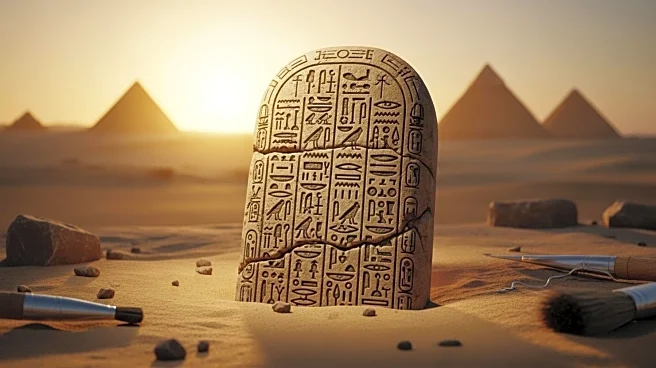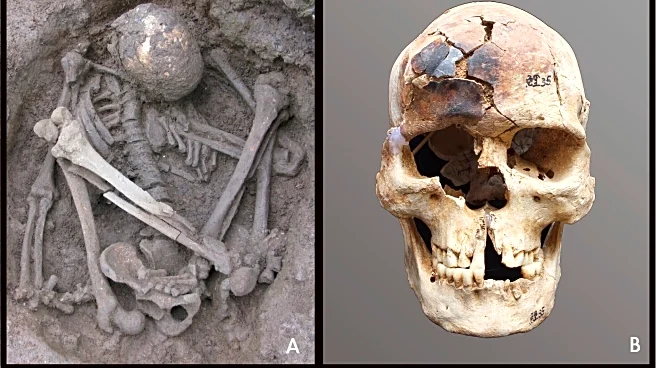What is the story about?
What's Happening?
Archaeologists have uncovered evidence of ancient mummification practices in Southeast Asia and southern China, dating back to the pre-Neolithic period up to 12,000 years ago. This discovery challenges previous assumptions about the origins and spread of mummification, which was thought to be primarily associated with the Chinchorro people of Chile and ancient Egyptians. The research, led by Hsiao-chun Hung of the Australian National University, involved examining 69 bone samples from 54 burials across southern China, northern Vietnam, and Indonesia. The bones showed signs of deliberate mummification through smoke-drying, a technique similar to practices observed in New Guinea and Australia. The study utilized X-ray diffraction and Fourier-transform infrared spectroscopy to detect changes in bone structure due to heat exposure, revealing that most samples had been subjected to selective heating.
Why It's Important?
This discovery significantly expands the understanding of mummification practices, suggesting they were more widespread and varied than previously thought. The findings indicate a long-term cultural persistence of mortuary practices among hunter-gatherer communities in Southeast Asia, New Guinea, and Australia. This challenges the notion that mummification was exclusive to certain ancient civilizations and highlights the interconnectedness of early human societies through shared funerary rites. The research provides insights into the cultural and spiritual significance of mummification, emphasizing its role in maintaining connections with ancestors. This could lead to a reevaluation of the historical narrative regarding the development and dissemination of mummification techniques across different regions.
What's Next?
Further research may explore the extent of these mummification practices across other regions and cultures, potentially uncovering more evidence of ancient mortuary traditions. Archaeologists might investigate the cultural links between these early societies and their influence on contemporary practices. Additionally, the study could prompt a broader examination of the social and spiritual roles of mummification in ancient communities, offering new perspectives on how these practices shaped human history. Collaborative efforts between international research teams could enhance the understanding of the global spread of mummification techniques.
Beyond the Headlines
The discovery raises questions about the ethical implications of studying human remains and the cultural sensitivity required when handling such artifacts. It also highlights the importance of preserving archaeological sites and respecting the heritage of indigenous communities. The findings may influence modern cultural practices, encouraging a deeper appreciation for ancient traditions and their impact on contemporary society. This research underscores the complexity of human cultural evolution and the diverse ways societies have honored their dead throughout history.
AI Generated Content
Do you find this article useful?















